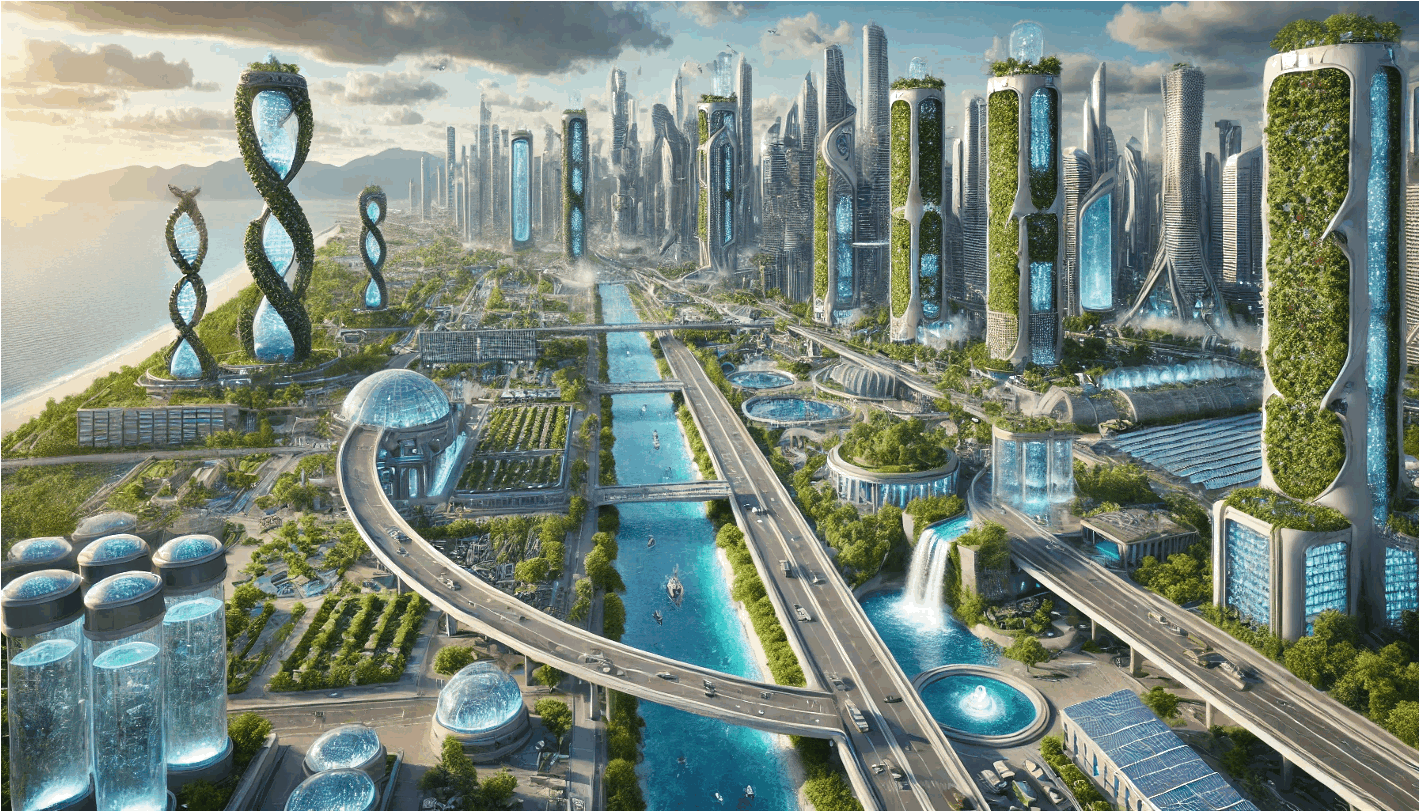Hydropolis 2080
NEWS 2030 – From Grains to Drops: Rethinking Water and Sand in Construction
ARTIST // Srihari Udhayakumar, Ankit Amargoal, Joel Joseph, Sridharan Sudhakar, Pranav Chaitanya Sharma, Yashwanth Narayanan Senthil, Paresh Patil
CREATION DATE // 2025
About
In the face of accelerating freshwater scarcity, a hidden but critical environmental challenge is coming into focus: the immense water consumption behind the global construction industry. Sand extraction and concrete production are two of the most water-intensive processes, silently contributing to ecosystem degradation, aquifer depletion, and biodiversity loss.
“From Grains to Drops” is a forward-thinking scenario imagined by a group of students from SRH University who explored the intersection of material science, AI, and circular economy principles to transform how we build — and how we conserve water.
Their vision introduces Hydropolis 2080, the world’s first fully AI-governed circular water economy city. Built upon the technological foundation of the AquaFlow 2050 initiative, Hydropolis pioneers a future where 100% of water is recycled, sand is harvested without ecological harm, and infrastructure itself helps restore nature.
Key Innovations Include:
- HydroWeave nanomembranes that purify and recycle water used in sand extraction zones, returning it cleaner than before.
- AQUALIS, an AI system that monitors river health, predicts droughts and floods, and dynamically adjusts extraction and filtration processes.
- Hydro-concrete buildings and roads that absorb, store, and purify rainwater — blending construction with ecosystem restoration.
- Floating solar desalination plants, ensuring water self-sufficiency in coastal regions affected by rising seas.
The Impact:
This holistic, systemic approach envisions:
- A zero net water loss construction industry
- Regeneration of highland river ecosystems
- Urban infrastructure as a tool for groundwater recharge
- Transparent, AI-driven water governance accessible to all citizens
By 2085, Hydropolis becomes a global blueprint, replicated in over 500 cities — proving that infrastructure growth and ecological preservation can not only coexist, but mutually reinforce each other.
Through this workshop conceptualized and facilitated by Nicole Loeser, titled “NEWS 2030 – Sustainable Innovations”, students from engineering were encouraged to push the boundaries of their imagination and critical thinking to design sustainable solutions addressing the growing demand for — and gradual depletion of — one of the world’s most essential resources: sand.
More about the Art For Futures Lab here


